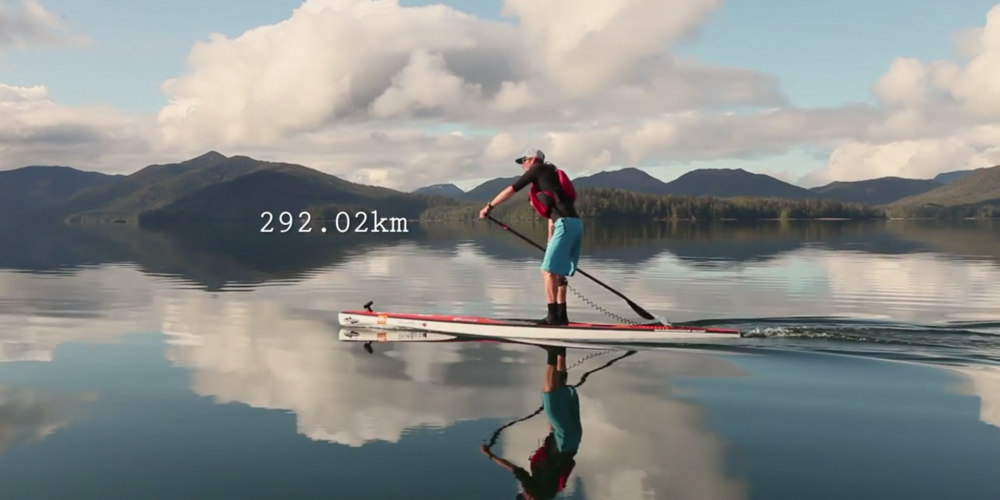There is a paddleboarder named Norm Hann. In 2010, he stood on his piece of polished wood and paddled through the misty straights in coastal Northwestern British Columbia. His journey took him along the route supertankers will use if the proposed Northern Gateway pipeline is built. Though today the pipeline is still only a plan, even in 2010, the trip evoked a farewell tour.
The location lends itself to elegy. A cloudy sky threatens to leak rain into grey seas, the islands Hann glides between are painted dark green and brown with the thick and dripping Great Bear Rainforest, and the towering Haida Watchmen poles are solemn, sombre symbols of an ancient culture so connected to the environment that an oil spill is an existential threat.
Of course, the pipeline is by no means a done deal. It has received a conditional “yes” from the federal government, a “maybe later” from the provincial government and a resounding “no” from the First Nations communities along the route. Provincial demands and legal challenges may postpone the project for years, and of course if the Conservatives are defeated in the next federal election, a new government might add more conditions or revoke permission entirely.
What is certain is that opposition to the project has been ferocious and that isn’t changing. Interviews in Stand show that people connected to this territory don’t care that the Northern Gateway promises to get Canadian companies a better selling price on bitumen and it is small comfort that Enbridge vows to improve its abysmal safety record. The people looking down the barrel are convinced that a spill is inevitable, which will poison the land, destroy the local economy and rob their children of a future.
If you’ve seen many documentaries before, much of Stand will feel familiar. There’s an opening montage of nature cinematography complete with a musical crescendo and accelerating editing that build to the title. Then we meet the central figure (that’s Hann) who will guide us through the story. After that, animated infographics explain the threat (that’s the pipeline). There are many impassioned sound bites from those who will be affected by the pipeline. Then, right at the end, the tone surges suddenly toward optimism, and we are reminded that a small group of committed individuals can change the world.
But woven into this sturdy old formula is, well, a lot of paddleboarding and surfing.
[It feels like Stand] used the pipeline to grab our attention and convince us that adventure sports like paddleboarding and surfing are awesome. … Don’t take that as a complaint.
When I saw the trailer, I figured this would be a straightforward movie that used the cinematic advantages of paddleboarding to convince us that the pipeline is bad. But for long sections, it feels more like a movie that used the pipeline to grab our attention and convince us that adventure sports like paddleboarding and surfing are awesome. That the movie is “presented by Quicksilver” may go some way in explaining the duration of these scenes.
Don’t take that as a complaint. If you, like me, aren’t very familiar with the sport, then these extended interludes will be interesting and memorable. Even if the extended surfing montages aren’t exactly essential to the structure of the film, they add an exhilaration to balance out the sobering message that this beautiful place is threatened.
A subplot follows local teenagers who make their own paddleboards as a school project, and Hann stops by to teach them the sport. In this way, they become invested in the ocean’s health and the pipeline becomes personal. As we watch the film, this happens to us a little bit too. We see their faces and hear the waves and hope that their story will not be a sad one, and this is the measure of a successful documentary.
Stand, Anthony Bonello & Nicolas Teichrob (directors), Canada: b4apres Media, 2013, 46 minutes.
Buy the film at standfilm.com or watch it on Netflix.
Reviewer Information
Ben is a former A\J editorial intern. He’s currently a freelance writer based in Ottawa. He tells stories about nature, science and policy.
Ben is a former A\J editorial intern. He’s currently a freelance writer based in Ottawa. He tells stories about nature, science and policy.













